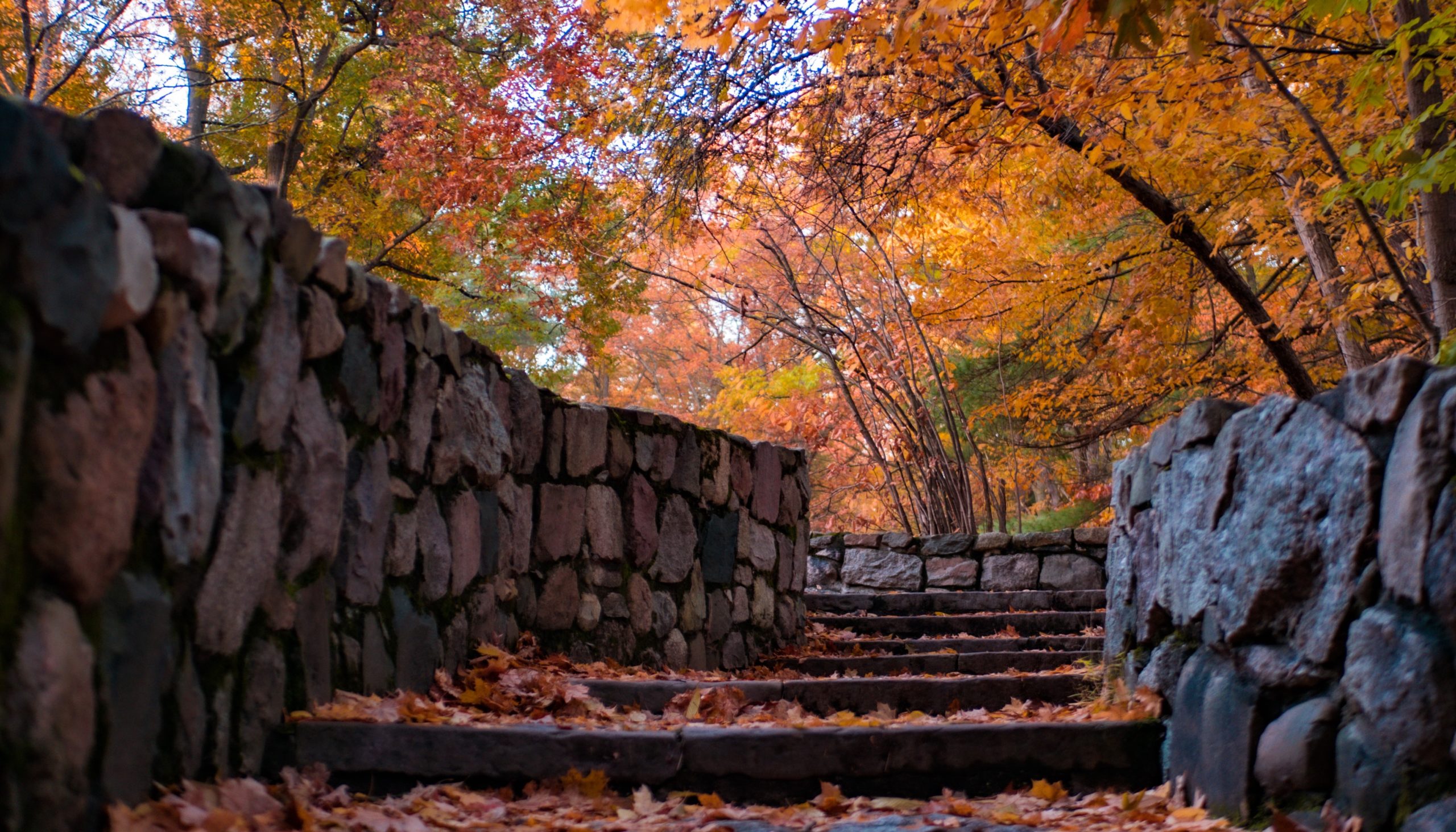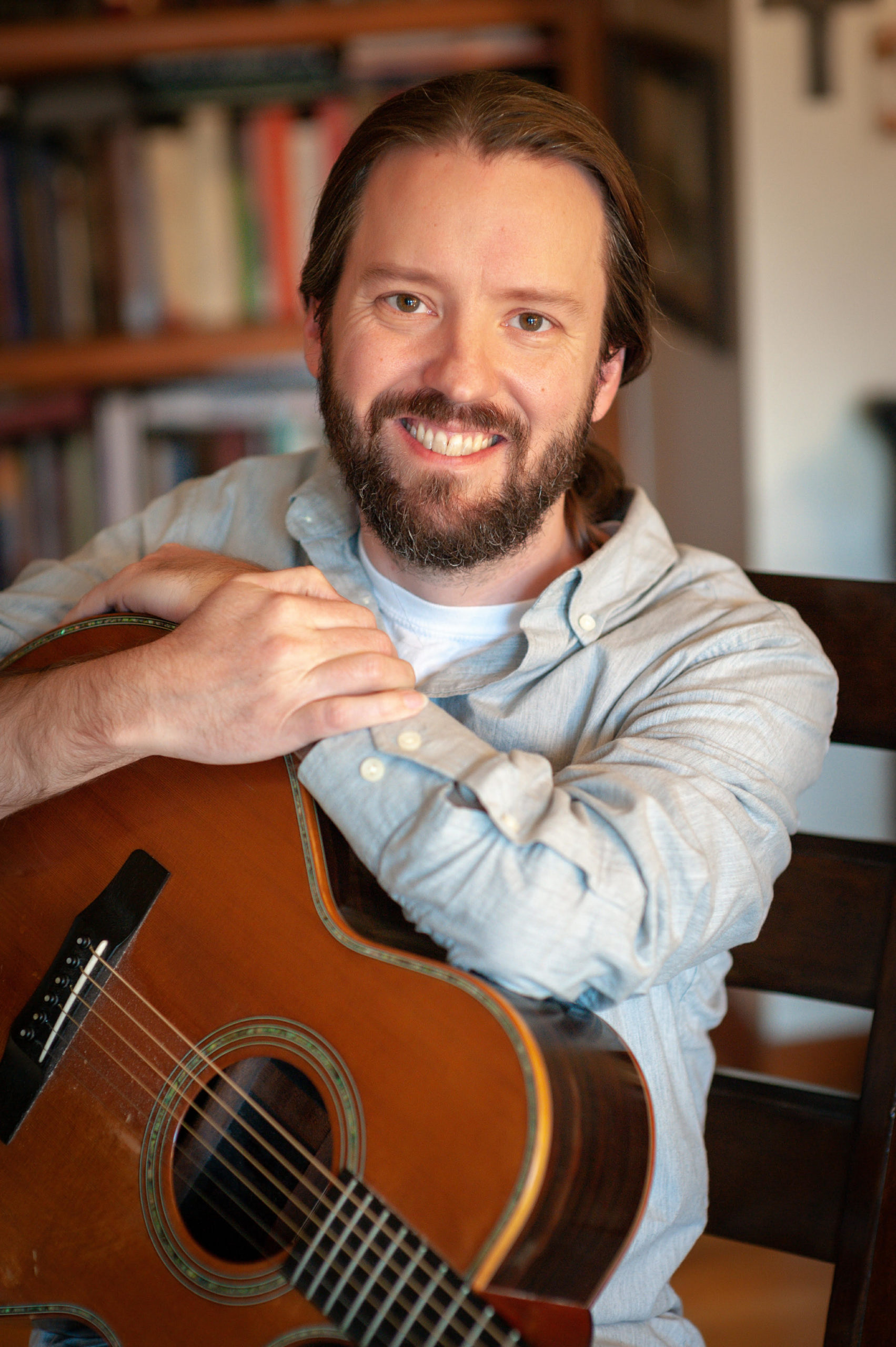To your right you’ll see the Hog’s head, go past that and walk on another half mile.”
“I don’t see a hog’s head anywhere, do you?”
“No, everybody names their house here – maybe it’s a name on a house?”
“Was there something like that a ways back? I’ve been feeling like we were going the wrong way.”
“Hog’s head. Hog’s head. Hmm. I don’t know.”
“Let’s just walk a little further, maybe we’re not to it yet?”
“There’s a fork in the road here… should we try up that way?”
Sara, Ruth, and I walked maybe ten feet further down the side of a narrow one-way lane, and just as we rounded the side of a high hedge, there on a pole hung a sign with a hog’s head on our right. We passed it and walked on another half mile before repeating the process.
This kind of thing became a kind of joke for the three of us as we walked along the Canterbury Way this past July. Another time, it was not a little Hog’s Head sign, but an entire village church that eluded us. Until, that is, we walked about twenty more steps where the tall stone structure seemed to suddenly leap out into bright daylight from behind a leafy boundary.
We seemed to routinely give up on the way about ten to twenty footfalls from the next landmark. Our habit, then, when we started to second guess the guidebook and fear we were lost, became to say, “let’s just walk about ten more feet.” Almost invariably, the way would materialize. The book knew best, after all.
![]()
The pilgrimage was easier in some ways than I had expected, and harder in others. I had mentally steeled myself for unpleasant vicissitudes of climate and strained muscles from having thirty or so pounds strapped to my back for eighty-five miles. To my surprise, aside from two of the hottest days on record in UK history, the weather was perfect; and my back never did hurt in the least.
My feet though. My feet have never hurt so badly in my life. My friend Steve had given me some excellent hiking shoes, so I had the right equipment. Thanks to those shoes I had almost no blisters, but the muscles and bones in my feet were entirely unprepared for day after day of walking with all the extra weight.
“Why don’t each of us share an embarrassing life moment?”
Conversation was meandering just as we ourselves were that day. I shared about the time when, as a young, green worship leader, I had gone on a rant during a worship service about how lame a certain lyric in a song was. I’d confidently challenged Songwriter X to be more careful with his lyrics (you know, for the sake of the Body of Christ, of course). After the service, a student had pulled me aside to point out that the lyric I’d taken issue with was, in fact, a direct quote from Scripture. My stomach had dropped to my ankles in embarrassment. At least he was kind enough not to point out my arrogance and biblical illiteracy in front of the whole congregation.
We walked on sharing humbling, unforgettable moments, stopping occasionally to greet bleating sheep that grazed beneath shade trees along the winding road. The stories helped us forget our feet for a while, but it wasn’t long before I couldn’t ignore mine. I clenched my teeth with every step.
“How much further to the hotel?”
“Not too far, just about two and half miles.”
Oh, you’ve got to be kidding me.
“Your dogs barking?”
My dogs were foaming at the mouth.
Somewhere during those remaining few miles, I crossed a threshold. The pain wasn’t going away, and there was only one way the mileage was going to go away. On we walked.
![]()
Our typical schedule was to wake up, breakfast, and walk to the nearest outdoor sitting spot where we’d read and pray together. Each day someone was the “Navigator” and someone was the “Friar”. It was the Friar’s job to lead devotional time. Then we’d walk till evening when we’d reach our hotel, stopping at opportune pubs to play cards and snack.
We talked about pain a lot on our pilgrimage. Should we be ashamed of it? Should we hide it? Should we feel bad about resting? Guilty about not getting as far as we’d hoped? So far, we had not really accounted for the need to build in rest days for our bodies to catch up and heal.
We were learning to accept our limitations, and welcome, rather than shun, our needs.
We concluded that pain was part of the deal; part of what pilgrimage inevitably entails. Pain was a companion that had good things to teach us, if we were willing to accept and care for her. Jesus’s pilgrimage had certainly been painful. Why should we expect anything different, or be ashamed to walk in pain ourselves?
![]()
When walking a pilgrimage path, you’re off road most of the time. That’s where you want to be, honestly. That’s where I wanted to be. I wanted to be away from cities, traffic, noise and hurry. Often our pilgrimage way climbed up on footbridges above large, multi-lane, high-traffic roadways. The obvious ways. The thoroughfares of speed and ease. We’d glimpse these broad, crammed, sensical ways briefly before plunging back into obscure, narrow, hidden ones.
How could we not look foolish to those drivers? We often felt foolish ourselves. Our way was primitive, slow, painful, and seemingly boring. That’s what we came to love about it. Certain good things become available as a result of particular choices, certain shy beauties wait off the main road. That’s a lesson I want to remember from my Canterbury pilgrimage. Moving fast does cost us, so does moving slow; we have to decide what quality we’d like our time to bear.
Esther Lightcap Meek says Reality calls for a right response; God is making a sort of proposal through every good thing He’s made; we can hurry past it, or stop and say “Amen”. We can say, “Yes.” If we do, new shy beauties begin to emerge and invite us “further up and further in.” Like the day we ran across a wild plum tree growing along a field boundary. I spotted grape-sized yellow and red signaling from within the foliage. We stopped in the silent daylight and filled our palms (and our mouths) with fruit invisible from the highway. Even if it had been growing along a highway, it would have been rendered invisible by the machine pace of the vehicles.
How many times did that sort of thing happen? How many times did the mere slowness and impracticality of our pilgrimage open to us new worlds of conversation, lessons from pain, delights of creation?
In eighty-five miles of walking, I found one silver dollar eucalyptus plant, and, plucking and crushing its cloudy green leaves, smelled its light fragrance. My friend Sara stopped us to gawk at a vast field of purple borage. My friend Grace calls these moments “wonder nuggets”, and we embraced the parlance.
Often we stopped to rest in little villages. If there was a church with a Pilgrims Way stamp, we’d make a record of our stop by stamping our Pilgrim Passports. The churches, usually open and empty, were quiet, cool, and calm respites. Sometimes we’d sing, if there was a piano. Sometimes we’d sing if there wasn’t. One time, at the end of a particularly taxing day, each of us wandered to some corner of an ancient sanctuary and fell asleep on the floor beneath a pew. Those churches were often a combination of delicate beauty and graceful ruin. I can still see the dark, irregular, rough-hewn rafters against the white plaster above me as I sank into the stillness.
![]()
We navigated by way of a little guidebook that my friends the Moons had given me. They’d used it a few years earlier when they walked the Canterbury Way. The book describes the way. If we had stopped at a pub and asked directions to the next town, I imagine an old barkeep would have given us directions of much the same kind as the book, if not a little more meandering and embellished by local custom and dialect. All that to say, we followed words on paper, rather than the usual lighted screen of a modern device. And we followed byways not highways.
We worked our way across the countryside paragraph by paragraph. Days measured in chapters. Miles measured in sentences. Every parenthesis a pause. The book never left our hands. Ours was not a mapped way, but a way told. It was a way we often were only able to interpret by way of conversation – a sort of hermeneutic of communally considered narrative. Sometimes there was clear signage, but most of the time we were hunting for clues: an apple tree growing beside a thatched cottage, a five-hundred year old carved stone in the grass, a hog’s head. We had to trust someone we’d never met who had walked this way before us, and we had to lean on each other to understand the story of how to walk it now.
We had to trust that this long storied stream of seemingly unrelated clues was going to stack up like living stones to reveal a cathedral just around some bend, just on the other side of some intervening hedge. Against the howling of our own bodies, we cheered each other on just a little further to the next resting place. Word by word, sentence by sentence, paragraph by paragraph our pilgrimage revealed a living tale whispered still in the obscure and foolish – a telling told along copses, through forests, boring through unnoticed gaps in neighborhoods, tunneling through ancient holloways. A path that flowed like dusty rivulets to some dreamt-of ocean ahead of us, each footfall like water runneling towards revelation: an arrival “guessed by faith”. [1]
![]()
[1] J.R.R. Tolkien, Mythopoeia. https://home.agh.edu.pl/~evermind/jrrtolkien/mythopoeia.htm
Featured image is courtesy of Aaron Burden via Unsplash. We are grateful for his generosity.
Matthew Clark is a singer/songwriter and storyteller from Mississippi. He has recorded several full length albums, including a Bible walk-through called “Bright Came the Word from His Mouth” and “Beautiful Secret Life.” Matthew’s current project, “The Well Trilogy,” consists of 3 full-length album/book combos releasing over 3 years. Each installment is made up of 11 songs and a companion book of 13 essays written by a variety of contributors exploring themes around encountering Jesus, faith-keeping, and the return of Christ. Part One, “Only the Lover Sings” is available both as an album and as a companion book.
Matthew also hosts a weekly podcast, “One Thousand Words – Stories on the Way,” featuring essays reflecting on faith-keeping. A touring musician and speaker, Matthew travels sharing songs and stories in a van called Vandalf.
Leave a Reply
A Field Guide to Cultivating ~ Essentials to Cultivating a Whole Life, Rooted in Christ, and Flourishing in Fellowship
Enjoy our gift to you as our Welcome to Cultivating! Discover the purpose of The Cultivating Project, and how you might find a "What, you too?" experience here with this fellowship of makers!


Add a comment
0 Comments